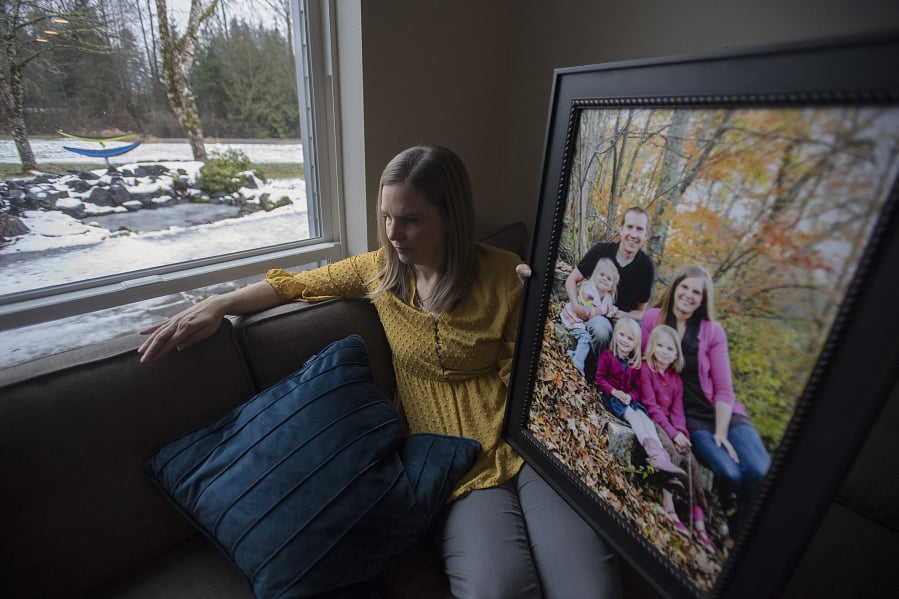In 2012, Alissa Parker walked into Sandy Hook Elementary School in Newtown, Conn., for a parent-teacher conference for her first-grade daughter, Emilie.
Parker was struck by the buzzer and camera at the school’s front door. She pressed the button and waited to be let inside to the open lobby. Different wings of the suburban campus branched off, accessible to all. Then, she noticed the doors to classrooms didn’t lock from the inside.
It didn’t feel right to Parker — how easy it was to get into the building and how open the campus felt.
“If someone came in, and I knew how easy it would be to get in, (the school) would be completely unprotected,” Parker said.
A month and a half later, Emilie, 6, was one of the 20 children killed by a gunman at the elementary school in one of the deadliest mass shootings in United States history.
“I just felt this rush of guilt because that alarm had been rung for me,” Parker said. “I did see those things. I could have talked about those things, and I just missed it because I never thought someone would be capable of doing something like that in an elementary school.”
Parker, who now lives outside of Vancouver, never wants that alarm to ring for her again.
Today, she’s working with state legislators, who are considering a suite of school safety bills aimed at addressing the underlying factors of threats to school safety: improving school climate, addressing students’ mental health needs, and providing training and resources to small, rural districts on addressing school safety.
It’s a model that Parker said works — and a model she hopes will help prevent the next Sandy Hook shooting in Washington.
Building a network
Chief among the bills being considered is House Bill 1216, which is co-sponsored by a bipartisan coalition of lawmakers including Rep. Paul Harris, R-Vancouver, Rep. Monica Stonier, D-Vancouver, Rep. Brandon Vick, R-Vancouver, and Rep. Sharon Wylie, D-Vancouver. Its companion bill in the Senate is co-sponsored by Sen. Annette Cleveland, D-Vancouver.
The bill, if approved, would require the Office of Superintendent of Public Instruction to establish a State School Safety Center, and each of the state’s nine educational service districts to establish Regional School Safety Centers. It’s a hub-and-spoke approach to coordinating school safety efforts throughout the state, working in tandem to provide information about school safety, develop and put into place new policies and training, and work with local mental health providers and law enforcement.
Rep. Laurie Dolan, D-Olympia, is the lead sponsor on the bill. She said with 295 school districts in Washington, some of them in small, rural areas, it can be difficult to approach school safety in a consistent way across the state.
“To me, our biggest goal of 2019 is to put that statewide network in place where even our smallest districts can get the training and staff help,” Dolan said.
What the bill won’t do is arm teachers, as some conservative lawmakers and pundits have pushed for following school shootings. That’s why the bill specifically describes “nonfirearm measures” to protect schools, Dolan said.
Eric Madfis, an associate professor at the University of Washington Tacoma who studies the underlying causes of school shootings, called arming teachers the “worst possible thing we can do.”
“It’s not only incredibly stupid and dangerous, that policy scares people,” Madfis said.
The legislation also requires that districts develop a consistent “threat assessment” model, something already being used in Clark County. That policy helps school staff determine whether a student is a threat to themselves or others, and allows the district to develop a plan to manage that threat. Educational Service District 112 is also already providing school safety plans and resources to area districts, including in the region’s rural schools like those described by Dolan.
“That’s the beauty of having the ESDs,” said Deb Drandoff, ESD 112 director of prevention and youth services. “We can provide the service at a much more efficient cost than having 295 districts trying to build their own.”
Shane Gardner, school safety and security manager for Evergreen Public Schools, echoed Drandoff, saying the bill would create a statewide system that already exists in Clark County.
“As long as we still have the autonomy to work with our local first responders and aren’t mandated to utilize a system that works in Puget Sound, but doesn’t work as well in (Southwest) Washington, I am all for it,” Gardner said by email.
Part of the solution
Speaking at her Clark County home last week, Parker’s phone began to ring. It was a Utah lawmaker, calling about a similar set of bills Parker is working to pass there. Safe and Sound Schools, the nonprofit group Parker founded with other parents of Sandy Hook victims, has pushed for similar legislation in Texas, Maryland and elsewhere.
“This is a model that we know works,” Parker said of the legislation. “We’ve seen it succeed in a short period of time.”
Parker’s home, which she shares with her husband and their two daughters, Madeline and Samantha, is a monument to her family. A large photo of the family of five greets visitors — Emilie smiling out from the frame in a pink sweater. Art by Emilie, who loved to draw, adorns the walls.
It’s quiet and tucked away. But Parker isn’t living life in the shadow of her daughter’s death. In the aftermath of the Sandy Hook school shooting, where 20-year-old Adam Lanza killed 26 students and staff before turning the gun on himself, people began to ask what she was going to do. Was she going to send her two daughters back to school? Would she home-school them instead?
Parker said she was transported back to a conversation she had with her own mother, who was the Parent Teacher Association president at her elementary school. Her mother was preparing for a fundraiser, running around making arrangements. Even as a child, Parker recognized the toll volunteer work was taking on her mother.
So she asked: “Why are you doing this?” That’s when Parker’s mother gave her an edict that would stick with her: “I believe in public schools, and I believe in being a part of this.”
“It wasn’t enough to say, ‘I’m checking out. I’m done,’ ” Parker said. “I wanted to be a part of the solution.”




